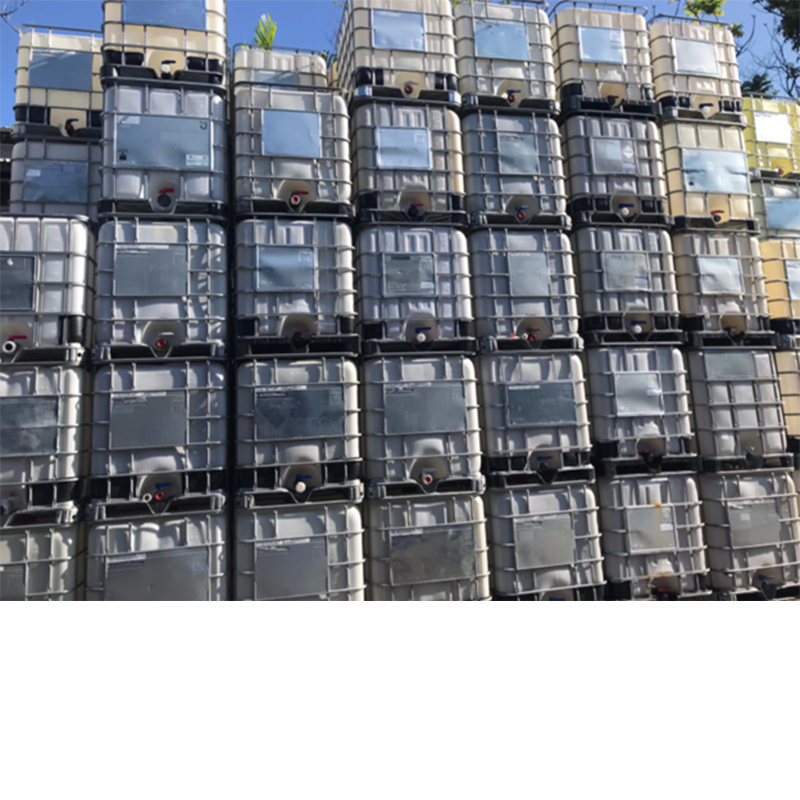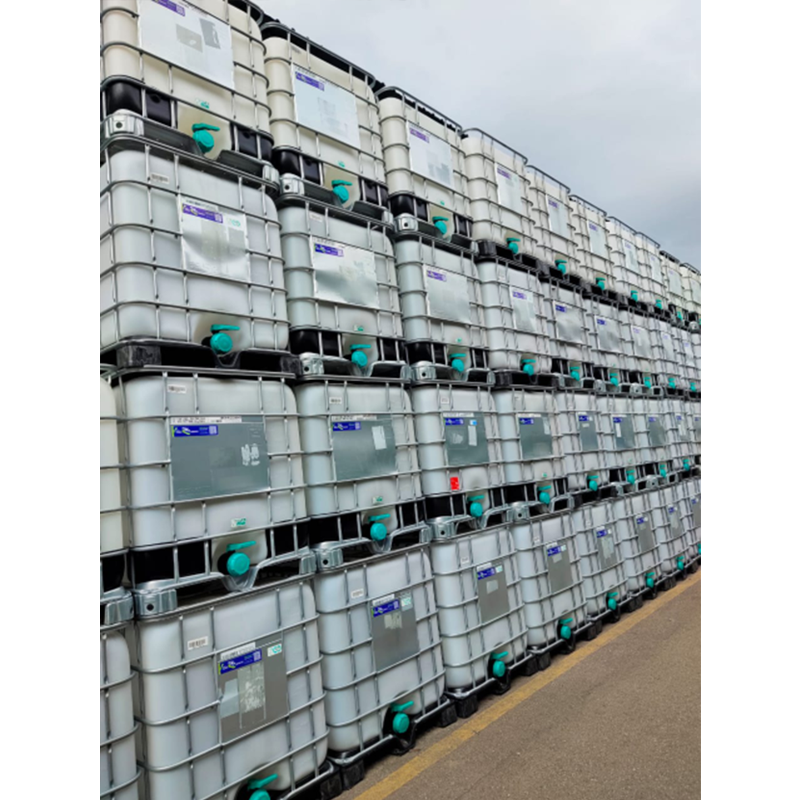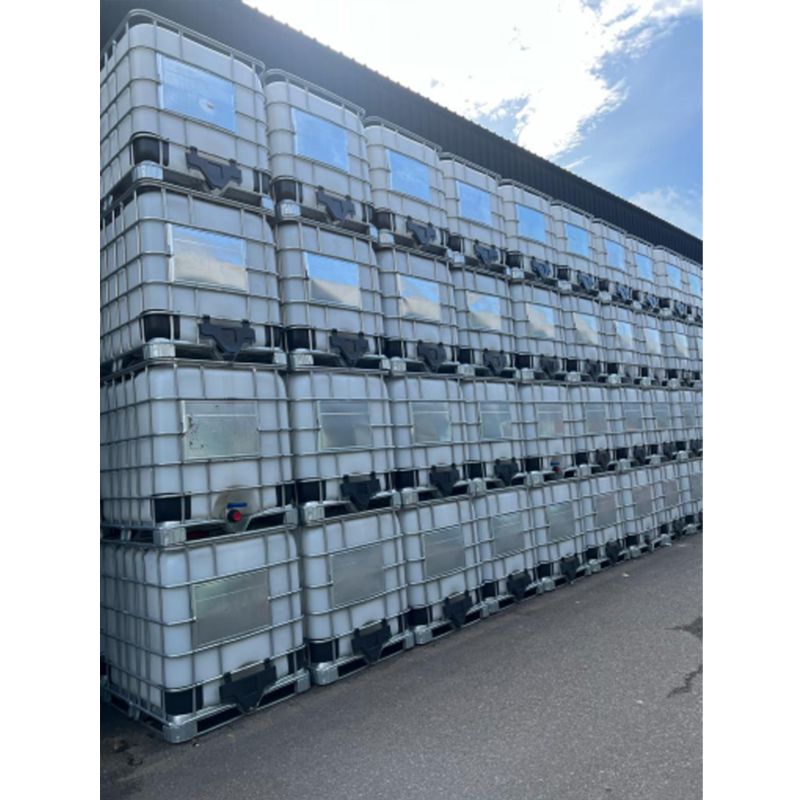Reconditioned IBCs: An Overview
Reconditioned Intermediate Bulk Containers (IBCs) are durable, cost-effective, and environmentally friendly solutions for transporting and storing bulk liquids, semi-solids, and granulated substances. They come in various size from 800L – 1200L and these containers undergo a thorough cleaning, inspection, and refurbishment process to restore them to industry standards, ensuring safety, quality, and reliability for reuse.
Benefits of Reconditioned IBCs
1. Cost Efficiency
Reconditioned IBCs are significantly less expensive than new containers, offering businesses a cost-effective alternative without compromising quality.
2. Environmental Sustainability
By refurbishing and reusing IBCs, companies reduce waste and minimize their carbon footprint. This contributes to circular economy initiatives and helps meet sustainability goals.
3. Regulatory Compliance
Reconditioned IBCs are processed to meet strict regulatory standards, including cleaning, leak testing, and structural integrity checks, ensuring they are safe for reuse.
4. Versatility
These containers are suitable for a wide range of industries, including chemicals, food and beverages, pharmaceuticals, and agriculture. They can handle various types of contents, from hazardous chemicals to non-hazardous liquids.
The Reconditioning Process
1. Collection
Used IBCs are collected from businesses or end-users.
2. Cleaning
Advanced cleaning techniques, such as high-pressure washing and chemical treatment, remove residues and contaminants from the inner bottle and external cage.
3. Inspection
The containers undergo a rigorous inspection to identify damage or wear. Parts such as valves, caps, or gaskets are replaced if necessary.
4. Testing
Leak tests and structural integrity assessments are performed to ensure the containers meet quality and safety standards.
5. Reassembly and Labeling
After inspection and testing, the IBCs are reassembled, labeled with relevant specifications, and prepared for distribution.
Considerations When Using Reconditioned IBCs
1. Compatibility: Ensure the IBC is compatible with the intended contents to avoid chemical reactions or contamination.
2. Proper Maintenance: Regular maintenance and inspection can prolong the lifespan of reconditioned IBCs.
Conclusion
Reconditioned IBCs are a practical choice for businesses seeking cost savings and sustainable practices. By opting for reconditioned containers, companies can contribute to environmental conservation while maintaining operational efficiency.stainless steel, or composite materials that provide structural integrity and long-lasting durability. They are commonly used in industries like chemicals, food and beverage, pharmaceuticals, and agriculture, where secure handling and safe containment are essential.
Rigid IBCs come in various standard sizes, typically ranging from 500 to 1,500 liters, and are built with features like reinforced corners, integrated pallets for easy handling with forklifts, and secure valves or openings for controlled dispensing. Their stackable design maximizes storage and transport efficiency, and they offer strong resistance to impact, UV rays, and chemical exposure, making them suitable for both indoor and outdoor use. Rigid IBCs are a cost-effective, environmentally friendly option for companies needing a reliable bulk packaging solution that reduces handling costs, minimizes product loss, and withstands rigorous transportation conditions.
| Model | IBC1200RO |
| Capacity | Nominal Volume: 1200 liters |
| Dimensions | Length: 1200 mm (approx.) Width: 1000 mm (approx.) Height: 1160–1260 mm (varies based on design) |
| Weight | Empty Weight: 55–70 kg (depending on material and construction) |
| Material | Inner Tank: High-Density Polyethylene (HDPE) Outer Cage: Galvanized steel frame or reinforced plastic Pallet Base: Composite, metal, or plastic (varies) |
| Performance Specifications | |
| Filling Opening | Diameter: 150 mm or 225 mm Cap type: Threaded with venting options |
| Discharge Valve | Type: Ball or butterfly valve Size: 50 mm or 80 mm Outlet Compatibility: Standard BSP or DIN threads |
| Operating Temperatures | Typical Range: -20°C to +60°C (contents and design-dependent) |
| Stacking Load | Static Stacking: Up to 3 units high Dynamic Stacking: Up to 2 units high (varies) |
| Approvals and Standards | UN/DOT certified for hazardous goods (varies based on product use) FDA-approved materials for food-grade applications (if applicable) |
| Model | IBC1000RO |
| Capacity | Nominal Volume: 1000 liters |
| Dimensions | Length: 1200 mm Width: 1000 mm Height: 1150–1200 mm |
| Weight | Empty Weight: 55–75 kg (depending on materials and construction) |
| Material | Inner Tank: High-Density Polyethylene (HDPE), UV-stabilized for outdoor use. Outer Cage: Galvanized steel or reinforced plastic for protection and stability. Pallet Base: Options include plastic, galvanized steel, or composite materials. |
| Performance Specifications | |
| Filling Opening | Diameter: 150 mm or 225 mm Closure: Threaded cap, optionally vented for pressure regulation. |
| Discharge Valve | Type: Ball or butterfly valve for controlled discharge. Size: 50 mm or 80 mm outlet diameter. Threads: Compatible with BSP or DIN fittings for easy connectivity. |
| Operating Temperature Range | Typical Range: -20°C to +60°C (material and content-dependent). |
| Stacking Load | Static: Up to 4 units high (depending on the contents and safety measures). Dynamic: Up to 2 units high during transport. |
| Compliance and Certifications | UN/DOT certification for hazardous goods (if applicable). FDA or food-grade certifications for food and beverage use. |
| Model | IBC800RO |
| Capacity | Nominal Volume: 800 liters |
| Dimensions | Length: 1200 mm (approx.) Width: 800 mm (approx.) Height: 950–1050 mm (varies based on design) |
| Weight | Empty Weight: 40–60 kg (depending on material and construction) |
| Material | Inner Tank: High-Density Polyethylene (HDPE) Outer Cage: Galvanized steel frame or reinforced plastic Pallet Base: Composite, metal, or plastic |
| Performance Specifications | |
| Filling Opening | Diameter: 150 mm or 225 mm Cap type: Threaded with optional venting |
| Discharge Valve | Type: Ball or butterfly valve Size: 50 mm or 80 mm Outlet Compatibility: Standard BSP or DIN threads |
| Operating Temperatures | Typical Range: -20°C to +60°C (contents and design-dependent) |
| Stacking Load | Static Stacking: Up to 3 units high Dynamic Stacking: Up to 2 units high (varies based on load and transport conditions) |
| Approvals and Standards | UN/DOT certified for hazardous materials (if applicable) FDA-approved materials for food-grade applications (when required) |





